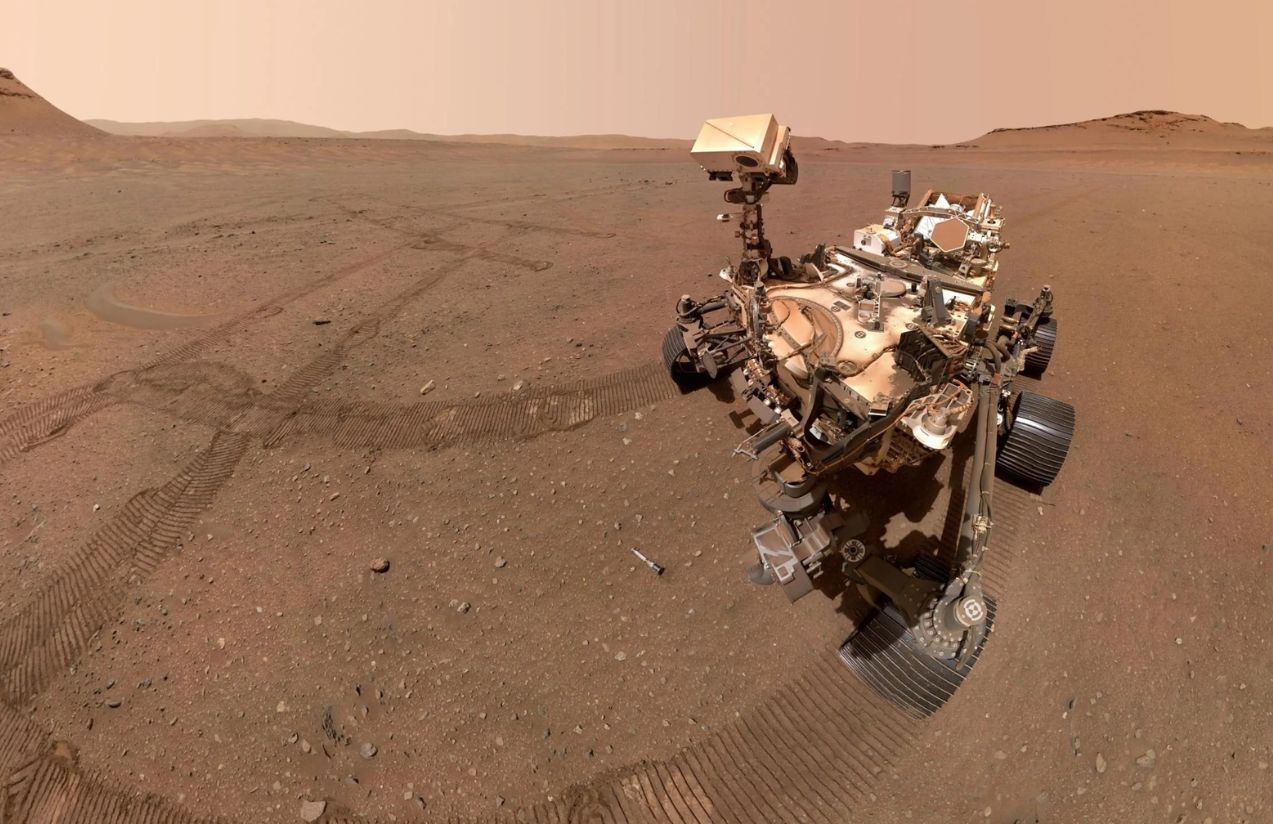On May 26, 2025, NASA’s Perseverance rover took advantage of an exceptionally clear day on Mars to capture an impressive panoramic image showing the planet’s sky and surrounding landscape with unprecedented clarity. This image, assembled from a mosaic of 96 photographs taken by the Mastcam-Z camera, reveals the Martian surface in stunning visual depth, particularly in a region known as Falbreen.
The image displays a refined contrast of colors:
The sky, enhanced to appear bluish, is strikingly similar to that of Earth; however, in its natural coloration, Mars’ signature reddish hue dominates. One of the most curious features is the so-called “floating rock”, a large stone seemingly suspended above a crescent-shaped ripple of dark sand, located about 4.4 meters from the rover. Scientists believe it was moved from another location by water flow, wind, or landslides, and later positioned there before the ripple formed.
Beyond that, Falbreen’s terrain could be even older than the Jezero Crater itself. The panorama shows a clear transition between geological units: flat, light-colored layers rich in olivine, and darker, possibly clay-rich layers that likely date back to early Martian history. At the bottom center of the image, a bright white patch is visible, caused by a 5-centimeter abrasion made by the rover’s drill to collect its 43rd sample, which is being considered for potential return to Earth, alongside Perseverance’s tire tracks on the Martian surface.
Why is the image captured by Perseverance in May 2025 considered the clearest panorama of the Martian sky ever taken?
Because the rover took advantage of an unusually clear and dust-free sky in the Falbreen region to create a high-resolution mosaic composed of 96 Mastcam-Z images. This allowed for an extraordinary panoramic view with unmatched depth, contrast, and detail, under perfect lighting conditions that showcased both the Martian sky and terrain like never before.

